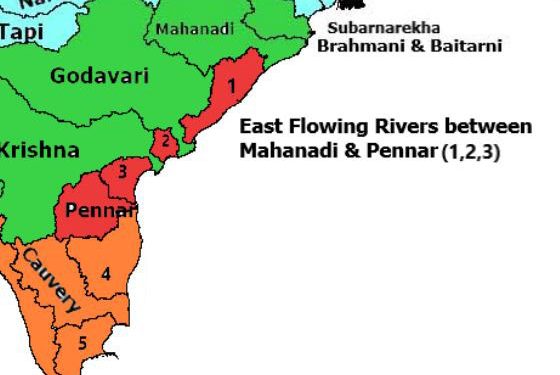New Delhi: In a concerning development, at least four rivers flowing through southern Odisha have no water, according to data released by the Central Water Commission. With the mercury soaring high right from the beginning of summer, this acquires much importance as far as availability of water is concerned. Data released by the Central Water Commission reveal that rivers between Mahanadi and Pennar basins that flow through Andhra Pradesh, Telangana and Odisha have no water at present. Rushikulya, Bahuda, Vamsadhara, and Nagavali in Odisha, apart from Sarada, Varaha, Tandava, Eluru, Gundlakamma, Tammileru, Musi, Paleru and Manneru rivers are left with no water, with experts blaming reduced monsoon, changing rainfall patterns, catchment degradation and groundwater depletion for it. Nitin Bassi from the Council on Energy, Environment and Water (CEEW) said their analysis of the Mahanadi river basin has suggested adoption of micro irrigation systems and altering cropping patterns could reduce the water deficit from 24 per cent (in a business-as-usual scenario) to about 18 per cent of the water supply requirement. The Central Water Commission (CWC) has detailed the state of water storage in reservoirs, noting that live storage capacity has dwindled to just 35 per cent of the total capacity. The reservoirs in Andhra Pradesh, Telangana, Karnataka, Kerala, and Tamil Nadu are experiencing a significant drop in storage levels, currently at only 20 per cent of their total capacity.
According to the data, the east-flowing rivers between Mahanadi and Pennar had zero storage this year, having a 100 per cent departure concerning an average of ten years. The east-flowing rivers between Pennar and Kanyakumari are also deficit and have just 12 per cent storage and a departure of over 50 per cent concerning an average of ten years. The data, issued April 4, presents a stark comparison to the same period last year, highlighting a substantial decline in available water resources. According to the data, the total live storage capacity of 150 monitored reservoirs in India amounts to 178.784 billion cubic metres (BCM), which accounts for about 69.35 per cent of the estimated total capacity of 257.812 BCM across the country.
However, the actual live storage available in these reservoirs stands at a mere 61.801 BCM, representing only 35 per cent of their total capacity. Himanshu Thakkar, coordinator of SANDRP, highlighted multiple reasons for the decline in reservoir water levels, including reduced monsoon rainfall, changing rainfall patterns, degradation of catchment areas and groundwater depletion.






































